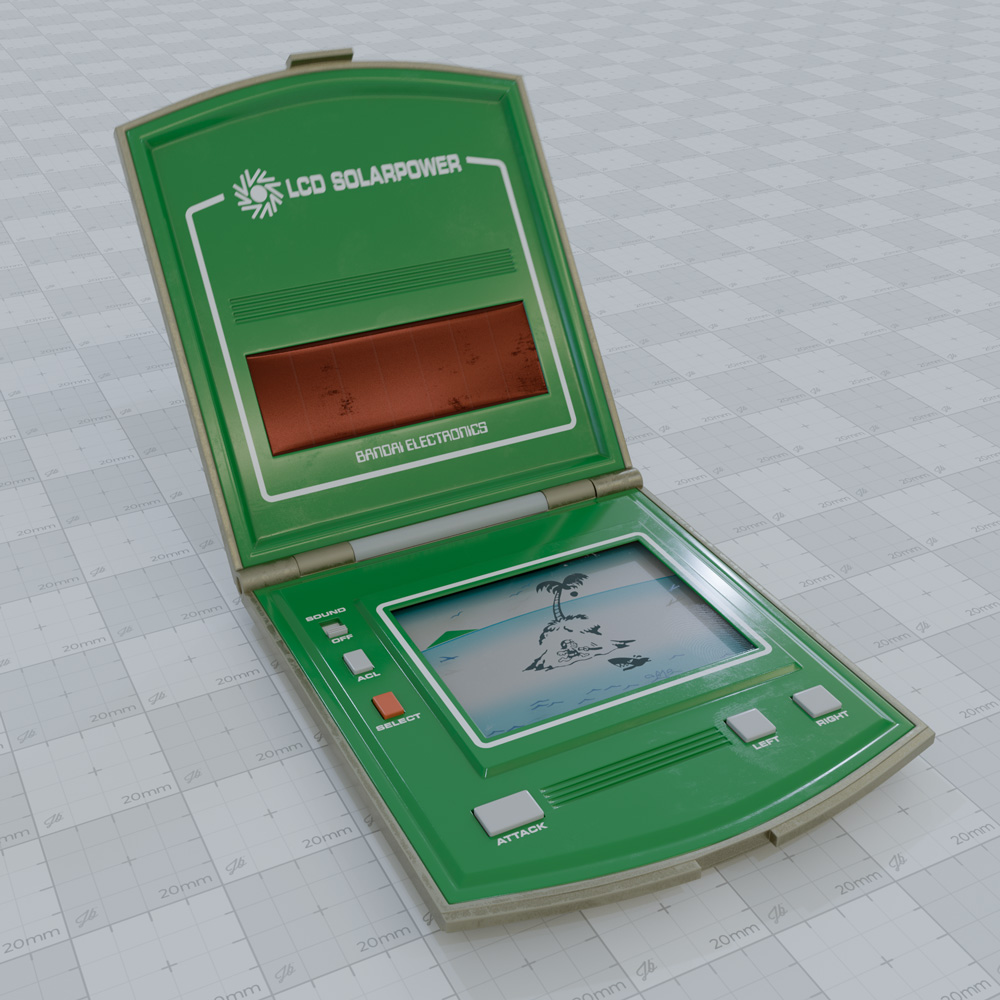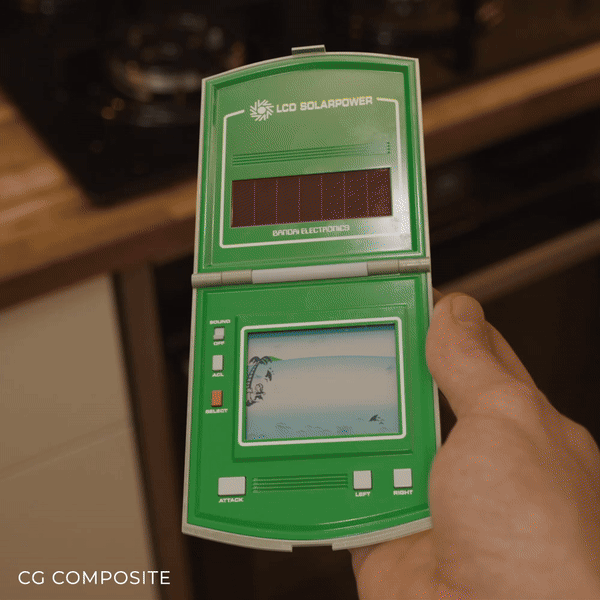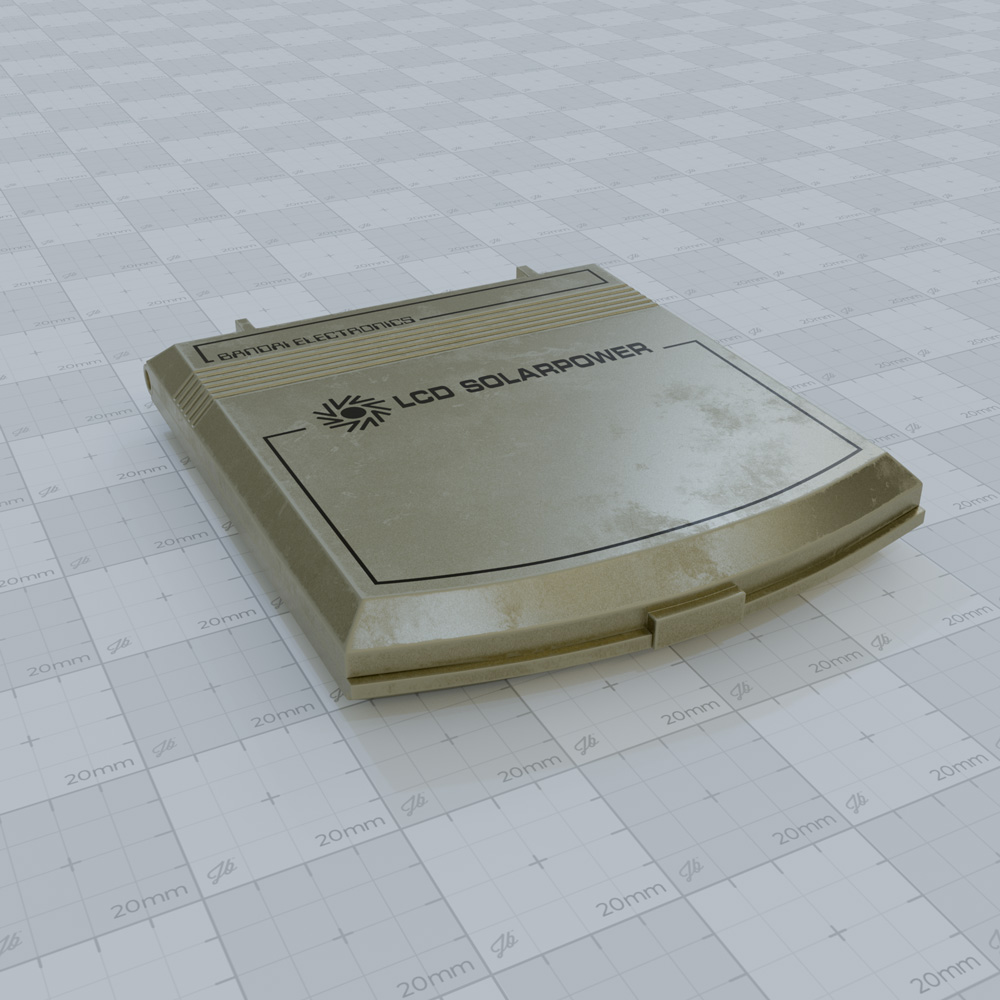In this project I've digitally recreated a cool little handheld LCD game from the eighties' heydays.
Named Shark Island, or SOS in some countries, this is a beautiful example of retro 80's handheld gaming tech from Bandai Electronics.
Despite its age, my copy of the game still works perfectly which was useful. Although, as it is solar powered, the capacitor no longer stores power so it needs constant light to work.
Nevertheless, any working physical object one can get their mitts on is fantastic reference material.
Animation & photoreal compositing
After I'd completed modelling the unit, I decided to go deeper and create a live action composited shot.
This meant recreating the layers of the screen and also the game’s awesome little cartoony sprites.
I then animated the vector graphics I'd created in Adobe Illustrator to look precisely like the original game's demo sequence.
What processes were involved?
I created two main shots. One was a standard pack shot render, the second was a live action composite.
The project phases for the live action shot; CG asset creation, live capture, and digital compositing.
Here's a list of processes:
1 – CG asset
- Blender : model unit
- Illustrator : construct game sprites
- Illustrator : construct product's decals
- After Effects : animate game sprites
- After Effects : export .png sequence
- Substance Painter : design texture maps
2 – Live plate
- Camera Capture : live plate with green tracking object
- Camera Capture : custom HDRI
3 – Digital compositing
- Fusion Studio : object track, add geometry
- Fusion Studio : export .fbx data
- Blender : import .fbx data and match move the asset
- Blender : integrate .png sequence
- Blender : render .exr AOVs
- Fusion Studio : key, garbage mattes, roto work
- Fusion Studio : asset treatment
- Fusion Studio : match live plate's gamma
- Fusion Studio : build shadows
- Fusion Studio : final composite work
- Davinci Resolve : colour grade
- Published: Saturday 13th April 2024



